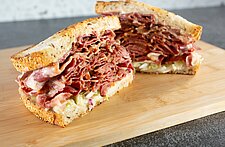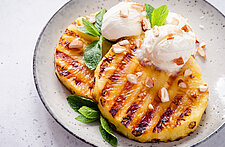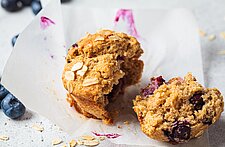Texas chefs walk a fine line between “southern” fare and “cowboy” cooking. Before the Spindletop days, East Texas was historically cotton country, and as such absorbed many of the cultural habits of the Deep South. But the unpleasantness of the post-civil war era generated a move away from southern cooking and a cultural realignment that was more westward facing – a cattle country/frontier mentality. Throw in the perennial influence of Mexico, and you have the ultimate culinary mashup of a cuisine that today covers all three – southern/cajun culture from the east, Mexican from the south, and cowboy/Native American from the west.
These cultural forces converge smack in the middle of the state, which is why it’s no surprise to find the Austin-San Antonio food scene producing such a bounty of innovation.
We’ve mentioned already the recurring influence of the past. But when we look at our past for inspiration, what do we see? Very few of us grew up going to Per Se after church. So the dishes that come to mind are more like waffles and prime rib. At his American diner/French bistro mashup, Philip Speer (Bonhomie) took from the success of classic southern chains like Waffle House and Cracker Barrel to pair a French waffle with foie gras. And Michael Fojtasek (Olamaie), who brings a modern Texas spin to Southern dishes, serves lamb quarters alongside his boiled peanuts dressed up with buttermilk and honey mustard.
Creative uses of cheese seem to pop up everywhere with these chefs. In addition to Madelyn Kay’s inventive use of burrata in a cocktail (see Part 1 of this post), cheese was an important element in several of the tasting dishes, from cotija cheese, which Max Snyder mixed with yuca root to make fried dumplings, to the chocolate-cheddar tart produced by Tavel Bristol-Joseph (another of this year’s Rising Stars and Kevin Fink’s partner at Emmer & Rye), to Daniela Herrera’s offering of popcorn ice cream garnished with caviar and cheddar snow. “It was a happy accident of collaboration,” says Herrera. “I was snacking on some leftover popcorn and caviar, and I asked the chef, ‘What works with this?’ And he said, ‘Cheddar.’”
In catering to an expanding base of vegetarian/vegan customers, Snyder pointed out that fermentation – among its many uses – can stand in for cheese powder. “Brewing byproducts make good vegan substitutions,” he said. In that vein, Herrera added that fermented tofu has a similar flavor profile to cheese.
This interest in developing dishes for the vegetarian/vegan crowd spills over with all of the chefs, as they focus on putting more vegetables at the center of the plate. Fink mentioned that interesting flavors are emerging from new ways to process grains, as well as different expressions of fat, such as nut oils. And Speer is finding new uses for almond flour and coconut milk.
Charring and burning remain popular as a way to extract new and intense flavor – a trend that seems tailor-made for southwestern-style dishes. Michael Fojtasek is smoking vegetables like cabbage to replace ham hock in vegetarian dishes, and his boiled peanuts owe a good part of their unique flavor to darkly burnt benne seeds. Herrera uses charred vanilla, and black lime plays a role in her popcorn ice cream presentation. Burnt honeycomb and black garlic find their way to the menu at Emmer & Rye. “We keep improving our understanding of the Maillard reaction,” says Fink. “So now we make black orange rinds, which we use like omani limes.” And as part of his efforts to reduce waste, he chars bread scraps and ferments them in brine for four months. The brine works as an in-house soy sauce, and the bread mulch gets puréed with egg yolks, then cured and dried to make his own version of bottarga. “We’re really focused on reducing waste,” he says.
Finally, new combinations featuring both savory and sweet flavors are ubiquitous. Herrera flavors ice cream with koji, garnishes coffee ice cream with nukazuke mushrooms, and is expanding her use of sunflowers to a whole-flower approach that includes seeds and petals. Kay haunts the tea aisle at the grocery store for ideas; her Blueberry Yum-Yum cocktail starts with a syrup made by brewing blueberry tea with wine instead of water. And Fink is serving dim sum with a combination of Fuyu persimmon, lemon thyme, ground cherry, and sorrel.
Subscribe to our weekly in-sight newsletter for more food and consumer trends!






